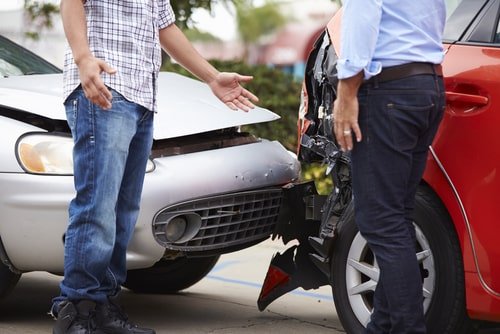Understanding fault and liability becomes crucial in a vehicle accident resulting in injury. The complexities of these legal concepts can significantly impact your ability to seek compensation and justice. As you navigate the aftermath of a collision, you’ll encounter a web of insurance policies, state laws, and varying degrees of responsibility. In this article, a car accident lawyer in Boise, will guide you through the intricacies of fault determination and liability assignment in vehicle injury cases.
Defining Fault and Liability in Vehicle Injury Cases
In vehicle injury cases, fault refers to the party responsible for causing the accident, while liability determines who is legally obligated to pay for damages. Establishing fault often involves examining evidence such as police reports, witness statements, and physical damage to vehicles. Liability, however, can be more complex, as it may extend beyond the at-fault driver to include vehicle owners, employers, or even manufacturers in cases of defective parts.
Understanding these concepts is crucial, as they directly impact insurance claims and potential legal proceedings. In some jurisdictions, comparative fault laws allow for shared responsibility, potentially reducing compensation for partially at-fault victims. This nuanced approach to fault and liability underscores the importance of thorough investigation and expert legal guidance in vehicle injury cases.
Negligence, Recklessness, and More
Determining fault and liability is crucial to understanding the root causes of vehicle accidents. Negligence often plays a significant role, encompassing behaviors like distracted driving, speeding, or failure to obey traffic laws. Recklessness takes negligence a step further, involving deliberate disregard for safety. Other common causes include:
- Impaired driving (alcohol or drugs)
- Poor road conditions
- Vehicle malfunctions
- Aggressive driving or road rage
Weather conditions like rain or fog can also contribute to accidents. By identifying these factors, you can better assess fault complexities in vehicle injury cases and determine appropriate liability.
Investigating the Accident Scene and Evidence
When investigating vehicle injury cases, it is crucial to thoroughly examine the accident scene and available evidence. Investigators meticulously analyze skid marks, vehicle positions, and debris patterns to reconstruct the sequence of events.
Photographic evidence, surveillance footage, and eyewitness accounts provide valuable insights into the collision’s circumstances. Expert analysis of vehicle damage can reveal critical information about impact points and speeds.
Additionally, electronic data from onboard computers and smartphones may offer precise details about vehicle movements and driver actions. By piecing together these various elements, investigators can build a comprehensive picture of the accident, helping to establish fault and liability in complex vehicle injury cases.
Legal Complexities of Liability in Vehicle Injury Cases
Determining liability in vehicle injury cases can be an intricate process. You’ll need to navigate through a maze of legal concepts, including comparative negligence, contributory negligence, and no-fault laws. These principles vary by state and can significantly impact your case’s outcome. Understanding the nuances of traffic laws, insurance policies, and potential third-party liability is crucial.
Additionally, you must consider factors like road conditions, vehicle maintenance records, and eyewitness accounts. Gathering and presenting compelling evidence is key to establishing fault. It’s often advisable to seek the expertise of a seasoned personal injury attorney who can guide you through these complexities and help you build a strong case.
Maximizing Compensation for Victims
Understanding fault and liability is crucial when seeking compensation in vehicle injury cases. Your ability to prove the other party’s negligence directly impacts the amount you may recover. Insurance companies often try to minimize payouts, so gathering strong evidence supporting your claim is essential. This includes police reports, witness statements, and medical records.
Additionally, consider factors like comparative negligence, which can affect your compensation if found partially at fault. Consulting with an experienced personal injury attorney can help you navigate these complexities and maximize your potential recovery. They can assess the strength of your case, negotiate with insurers, and represent your interests in court if necessary.
Final Thoughts
As you navigate the complexities of fault and liability in vehicle injury cases, remember that each situation is unique. Understanding the nuances of negligence, comparative fault, and insurance coverage can significantly impact your case’s outcome. Consult with an experienced car accident lawyer in boise who can guide you through the legal intricacies and help you build a strong claim. By gathering thorough evidence, documenting your injuries, and being mindful of statutes of limitations, you’ll be better prepared to pursue fair compensation.
